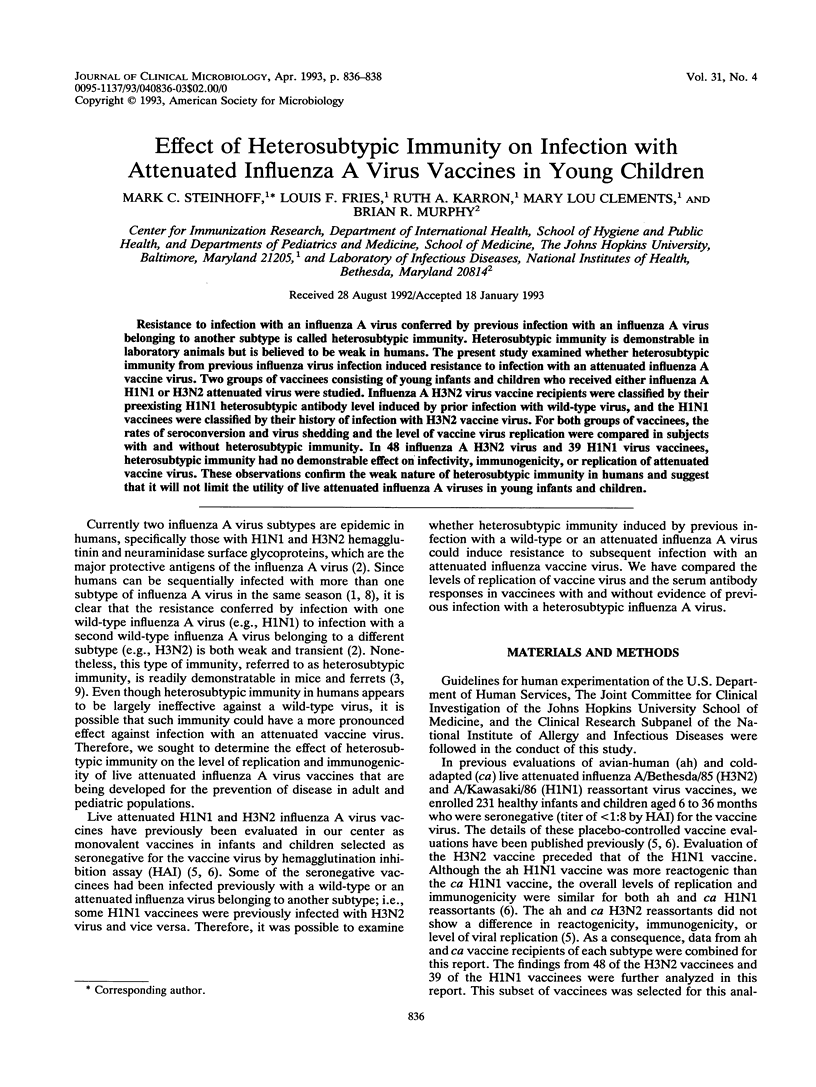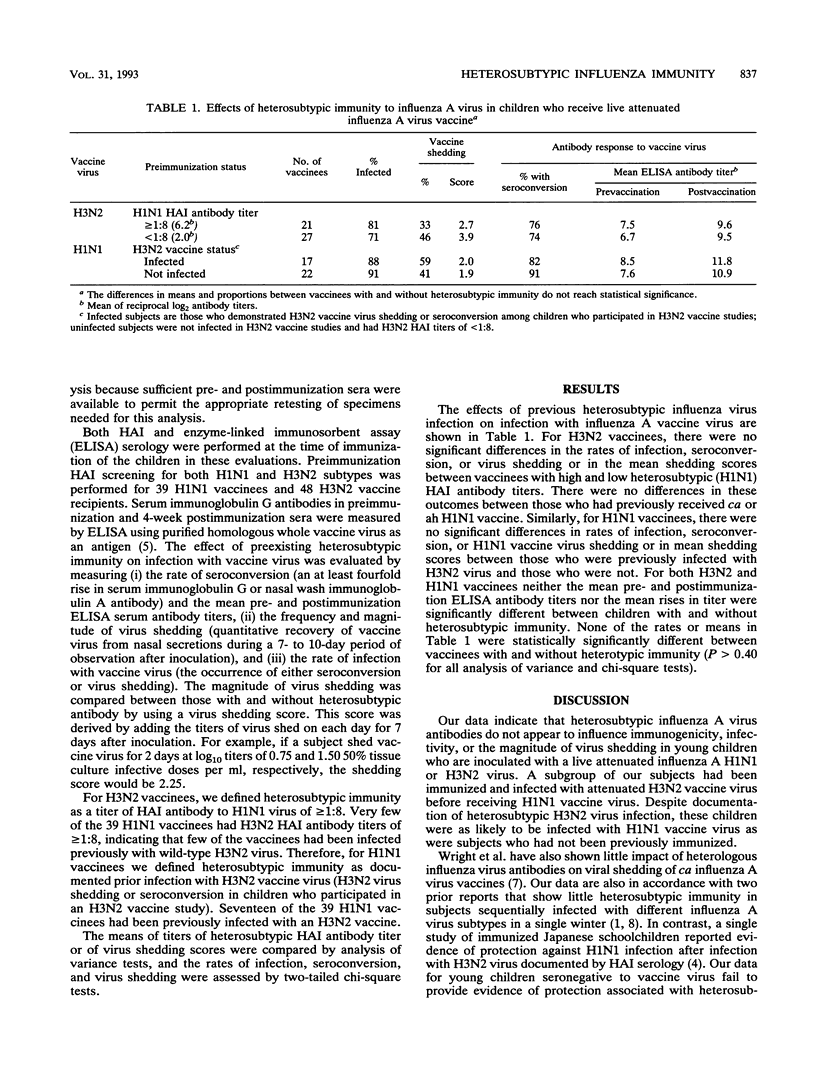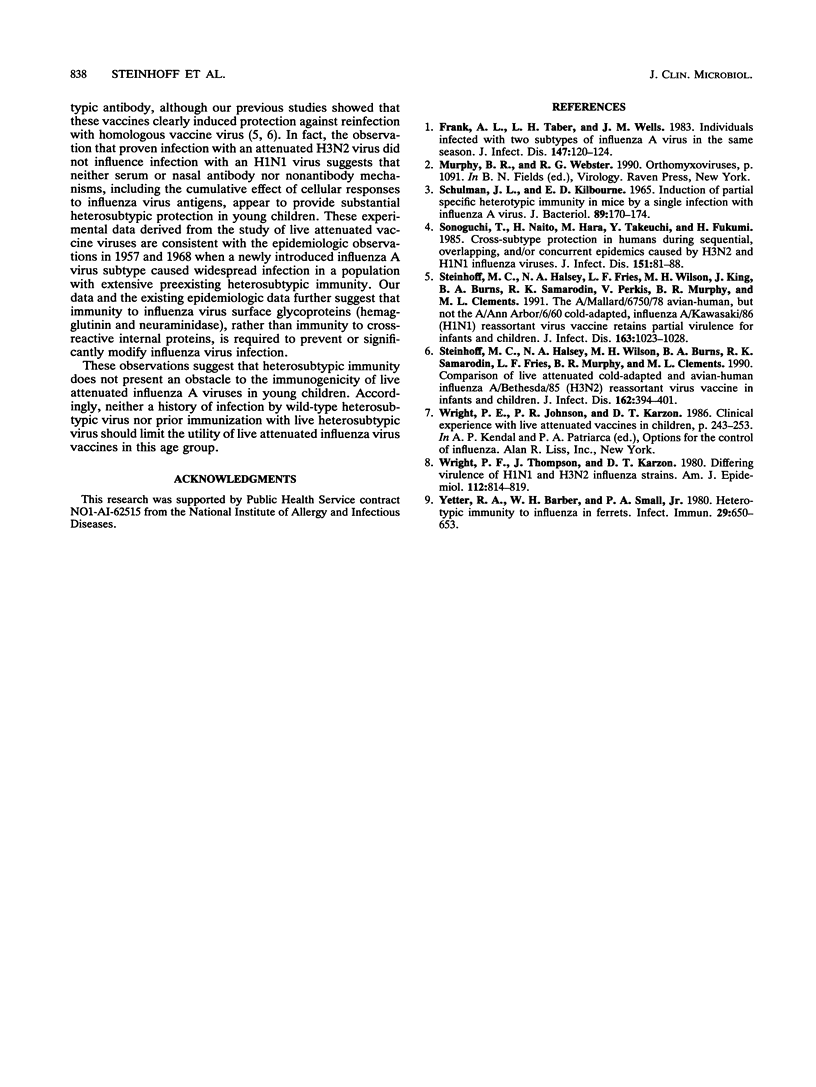Abstract
Resistance to infection with an influenza A virus conferred by previous infection with an influenza A virus belonging to another subtype is called heterosubtypic immunity. Heterosubtypic immunity is demonstrable in laboratory animals but is believed to be weak in humans. The present study examined whether heterosubtypic immunity from previous influenza virus infection induced resistance to infection with an attenuated influenza A vaccine virus. Two groups of vaccinees consisting of young infants and children who received either influenza A H1N1 or H3N2 attenuated virus were studied. Influenza A H3N2 virus vaccine recipients were classified by their preexisting H1N1 heterosubtypic antibody level induced by prior infection with wild-type virus, and the H1N1 vaccinees were classified by their history of infection with H3N2 vaccine virus. For both groups of vaccinees, the rates of seroconversion and virus shedding and the level of vaccine virus replication were compared in subjects with and without heterosubtypic immunity. In 48 influenza A H3N2 virus and 39 H1N1 virus vaccinees, heterosubtypic immunity had no demonstrable effect on infectivity, immunogenicity, or replication of attenuated vaccine virus. These observations confirm the weak nature of heterosubtypic immunity in humans and suggest that it will not limit the utility of live attenuated influenza A viruses in young infants and children.
Full text
PDF


Selected References
These references are in PubMed. This may not be the complete list of references from this article.
- Frank A. L., Taber L. H., Wells J. M. Individuals infected with two subtypes of influenza A virus in the same season. J Infect Dis. 1983 Jan;147(1):120–124. doi: 10.1093/infdis/147.1.120. [DOI] [PubMed] [Google Scholar]
- SCHULMAN J. L., KILBOURNE E. D. INDUCTION OF PARTIAL SPECIFIC HETEROTYPIC IMMUNITY IN MICE BY A SINGLE INFECTION WITH INFLUENZA A VIRUS. J Bacteriol. 1965 Jan;89:170–174. doi: 10.1128/jb.89.1.170-174.1965. [DOI] [PMC free article] [PubMed] [Google Scholar]
- Sonoguchi T., Naito H., Hara M., Takeuchi Y., Fukumi H. Cross-subtype protection in humans during sequential, overlapping, and/or concurrent epidemics caused by H3N2 and H1N1 influenza viruses. J Infect Dis. 1985 Jan;151(1):81–88. doi: 10.1093/infdis/151.1.81. [DOI] [PubMed] [Google Scholar]
- Steinhoff M. C., Halsey N. A., Fries L. F., Wilson M. H., King J., Burns B. A., Samorodin R. K., Perkis V., Murphy B. R., Clements M. L. The A/Mallard/6750/78 avian-human, but not the A/Ann Arbor/6/60 cold-adapted, influenza A/Kawasaki/86 (H1N1) reassortant virus vaccine retains partial virulence for infants and children. J Infect Dis. 1991 May;163(5):1023–1028. doi: 10.1093/infdis/163.5.1023. [DOI] [PubMed] [Google Scholar]
- Steinhoff M. C., Halsey N. A., Wilson M. H., Burns B. A., Samorodin R. K., Fries L. F., Murphy B. R., Clements M. L. Comparison of live attenuated cold-adapted and avian-human influenza A/Bethesda/85 (H3N2) reassortant virus vaccines in infants and children. J Infect Dis. 1990 Aug;162(2):394–401. doi: 10.1093/infdis/162.2.394. [DOI] [PubMed] [Google Scholar]
- Wright P. F., Thompson J., Karzon D. T. Differing virulence of H1N1 and H3N2 influenza strains. Am J Epidemiol. 1980 Dec;112(6):814–819. doi: 10.1093/oxfordjournals.aje.a113053. [DOI] [PubMed] [Google Scholar]
- Yetter R. A., Barber W. H., Small P. A., Jr Heterotypic immunity to influenza in ferrets. Infect Immun. 1980 Aug;29(2):650–653. doi: 10.1128/iai.29.2.650-653.1980. [DOI] [PMC free article] [PubMed] [Google Scholar]


